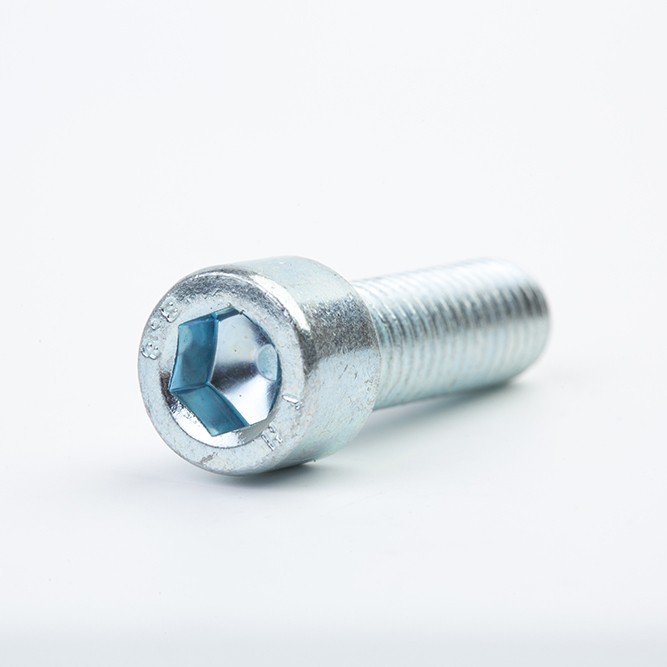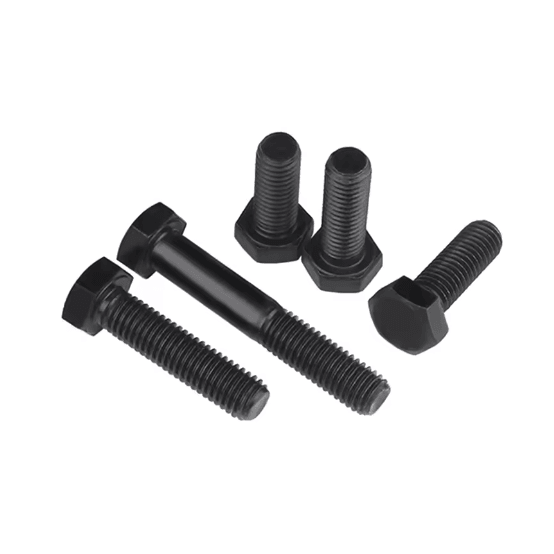In the world of construction, manufacturing, and engineering, the humble bolt is a true cornerstone. It’s a fastener that holds our world together, from towering skyscrapers to the intricate machinery that powers our industries. But not all bolts are created equal. Choosing the wrong type of bolt can lead to project delays, structural failures, and costly rework. As the owner of a factory that has been specializing in bolt manufacturing for years, I’m Allen, and I’ve seen firsthand how critical the right fastener is to a project’s success. This guide is born from that experience. We’ll explore the different types of bolts, break down their components, and give you the knowledge to select the perfect fastener for any application, ensuring your projects are built on a foundation of strength and reliability.
What’s the Fundamental Difference Between Bolts and Screws?
One of the most common points of confusion in the fastener world is the distinction between bolts and screws. While they look similar, their intended functions are different. A bolt is an externally threaded fastener designed to be inserted through holes in assembled parts. It is normally intended to be tightened or released by torquing a nut. The key here is the use of a nut. The bolt passes through unthreaded holes and the clamping force is generated by the nut on the opposite side.
A screw, on the other hand, is designed to be inserted into a hole in one of the parts being assembled and to mate with pre-formed or self-created internal threads. The screw essentially cuts its own thread into the material (like a wood screw) or fits into a pre-tapped hole. It doesn’t typically need a nut to function. Think of it this way: a bolt clamps objects together with a nut, while a screw fastens itself into an object. In my experience, this is the most practical way to differentiate the two, although some hybrid fasteners can blur the lines.
How Do You Choose the Right Bolt for Your Project?
Selecting the right bolt is a multi-step process that goes beyond just picking the right size. For a procurement officer like Mark, making the correct choice impacts budget, safety, and project timelines. You need to consider several key factors to ensure the fastener will perform as expected under specific conditions. First, evaluate the load. Will the fastener be under tension (pulling forces) or shear (sideways forces)? The answer determines the required strength, or bolt grade.
Second, consider the environment. Will the bolt be exposed to moisture, chemicals, or extreme temperatures? This will dictate the necessary bolt materials and whether a protective coating is needed to prevent corrosion. For example, stainless steel bolts are excellent for marine applications. Third, think about the materials being joined. Fastening wood requires a different type of bolt (like lag bolts) than fastening steel beams. Finally, consider accessibility. Will the bolt head be in a tight space? This might influence the type of head and the tool required for installation. Answering these questions will guide you to the perfect fastener for the job.
What Are the Most Common Types of Bolts and Their Uses?
While there are countless specialized bolts, a few types are commonly used across a wide range of industries. Understanding these common bolt varieties is the first step to mastering fastener selection. Each bolt designed for a specific purpose, offering unique advantages.
Here’s a breakdown of some of the most prevalent bolt types:
- Hex Bolt: Arguably the most common type of bolt, the hex bolt features a six-sided, hexagonal head. This design allows for easy gripping with a variety of tools from multiple angles, making it a versatile workhorse in construction, machinery, and automotive repair. Our factory produces millions of these standard bolts every year.
- Carriage Bolt: A carriage bolt is distinguished by its smooth, domed head and a square section directly underneath. When this bolt is tightened, the square neck locks into the material (often wood), which prevents the bolt from turning. This clever design allows the fastener to be tightened or loosened from one side with a single tool.
- Anchor Bolt: An anchor bolt is used to attach objects to concrete. The “J” or “L” shape of the end of the bolt gets embedded in the concrete, providing a strong anchoring point for structural supports, machinery, and more. A specialized version is the Expansion Shell Anchor Bolt, which expands within the hole to create a secure friction fit.
- Lag Bolts (or Lag Screws): Despite their name, lag screws are essentially heavy-duty screws with a hex or square head. They are large, coarse-threaded fasteners used to secure heavy lumber and other materials that can bear a heavy load. Because they create their own thread in wood, they don’t require a nut.
- Flange Bolt: A flange bolt is a type of hex bolt with a built-in washer (the flange) under the head. This flange distributes the clamping load over a wider area, eliminating the need for a separate washer. They are often used in the automotive industries on vehicle frames and plumbing applications.
Why Does the Bolt Head Shape Matter So Much?
The bolt head is more than just a place to put a wrench; its design is critical to the fastener’s function. The shape determines the type of tool used for installation, how the load is distributed, and whether the bolt can be used in specific applications. A poorly chosen bolt head can make installation difficult or even compromise the integrity of the bolt joint.
The hex head is popular for its strength and ease of use, accommodating wrenches from six different angles. In contrast, the smooth, low-profile head of a carriage bolt is ideal for applications where a snag-free surface is desired, like on playground equipment or wooden decks. Square head bolts were the industry standard before hex bolts and are still used in applications requiring a rustic look or where more surface area for gripping is needed. Specialized heads, like those on T-head bolts or eye bolts (which have a loop for attaching cables or wires), are designed for very specific mechanical functions. The bolt head is truly where the fastener meets the application.
Understanding Bolt Grades: What Do the Markings Mean for Strength?
The markings on a bolt head are not just for decoration; they are a crucial indicator of the bolt’s strength. Bolt grades define the mechanical properties of a fastener, particularly its tensile strength—the maximum amount of pulling force it can withstand before breaking. Using a bolt with a grade too low for the application can have catastrophic consequences. This is a topic I always stress with new clients.
In the United States, the SAE (Society of Automotive Engineers) standard is common, with markings represented by radial lines on the bolt head. For example, an SAE Grade 5 bolt has 3 radial lines and is made of medium-strength carbon steel. A Grade 8 bolt has 6 radial lines and is made of a higher-strength, heat-treated alloy steel. The metric system uses property classes, which are numbers stamped on the head (e.g., 8.8, 10.9). Higher numbers indicate greater strength. Understanding bolt grades is essential for any engineer or builder to ensure the safety and longevity of a structure or machine. A reliable supplier will always provide clear documentation on the grades of their fastener products.
A Closer Look at Bolt Materials and Protective Coatings
The performance of a fastener is heavily dependent on its material. Bolts are available in a variety of metals, each offering a unique balance of strength, corrosion resistance, and cost. Carbon steel is the most common material due to its strength and affordability. However, without a protective coating, it is highly susceptible to rust. This is why many bolts are coated.
Common coatings include zinc plating, which offers decent corrosion resistance for indoor or mild outdoor use, and hot-dip galvanizing, which provides a much thicker, more robust layer of zinc for harsh outdoor environments. For superior corrosion resistance, stainless steel is the material of choice, although it comes at a higher cost. For extreme applications requiring high strength and low weight, exotic materials like titanium and aluminum alloys are used, particularly in the aerospace and racing industries. The choice of bolt materials is a critical decision that directly impacts the fastener’s lifespan and reliability.
Decoding Bolt Thread Types: Coarse vs. Fine
The threads on a bolt are not all the same. The primary distinction is between coarse threads (UNC – Unified National Coarse) and fine threads (UNF – Unified National Fine). The difference lies in the spacing of the threads along the bolt shaft. Coarse threads are spaced further apart, while fine threads are packed closer together.
Coarse-threaded bolts are ideal for general-purpose applications. They are less likely to cross-thread during installation, can be installed more quickly, and are more tolerant of minor damage or debris in the threads. They are the standard choice for most construction and assembly work. Fine-threaded bolts, on the other hand, offer greater tensile strength and resistance to loosening from vibration due to their steeper thread angle and greater contact area. This makes them the preferred choice in precision applications like automotive engines and aerospace components, where reliability under constant vibration is paramount.
How Does a Bolt Joint Work to Secure Materials?
A bolt joint is a marvel of simple physics. When you tighten a nut on a threaded bolt, you are essentially stretching the bolt like a very stiff spring. This stretching action, known as bolt preload, creates a powerful clamping force that holds the joined materials tightly together. This tension is what keeps the joint secure, not just the physical obstruction of the bolt shaft.
The friction created by this clamping force is what prevents the materials from sliding apart under shear loads. A properly tightened bolt joint is incredibly strong and reliable. This is why using a torque wrench is so important in critical applications; it ensures the correct amount of stretch and clamping force is applied. If the bolt is tightened too little, the joint may loosen under vibration. If it’s tightened too much, the bolt may yield or even snap. Achieving the correct preload is the key to a successful and safe bolt joint. The system is completed with high-quality Nuts and Washers to distribute the load effectively.
Exploring Specialized and Industrial Bolts for Unique Applications
Beyond the common varieties, there exists a vast world of specialized industrial bolts designed for specific and demanding tasks. These fasteners often have unique designs to solve particular engineering challenges. For example, a shoulder bolt (or stripper bolt) has a long, unthreaded shoulder with a very precise diameter that acts as a pivot point or shaft for moving parts.
Other specialized types include:
- Elevator Bolts: These bolts feature an unthreaded section and a wide, flat countersunk head, making them perfect for conveyor belts and other systems where a low-profile head is needed to avoid interference.
- Hanger Bolt: A unique fastener with machine threads on one end and wood screw threads on the other. It’s used for suspending objects from or attaching objects to wood.
- Blind Bolt: A blind bolt is a special type of bolt designed for applications where you only have access to one side of the material. It works by expanding behind the material to create a secure anchor point, making it invaluable for hollow wall or box section installations.
- Arbor Bolt: An arbor bolt is designed to secure a cutting tool (like a saw blade) to the arbor, or drive shaft, of a power tool. It often has a reverse thread to prevent the bolt from loosening as the tool spins.
Sourcing Your Fasteners: Partnering with a Reliable Manufacturer
For any business that relies on high-quality fasteners, the supplier relationship is paramount. As a procurement officer, you need a partner who delivers consistent quality, meets deadlines, and communicates effectively. Sourcing directly from a factory provides numerous advantages, including better pricing, greater control over specifications, and a direct line of communication with the people responsible for your product’s quality.
When evaluating a supplier for our range of industrial bolts, look for a proven track record, robust quality control processes, and industry certifications like ISO 9001. A trustworthy partner will be transparent about their bolt manufacturing process and work with you to solve logistical challenges. We understand that a delayed shipment of a critical fastener can bring an entire project to a halt. That’s why we focus on building long-term partnerships built on trust, reliability, and a shared commitment to excellence.
Key Takeaways
Navigating the world of bolts can be complex, but understanding the fundamentals will empower you to make the best choices for your projects. Here are the most important things to remember:
- Bolt vs. Screw: A bolt is designed to be used with a nut, while a screw threads directly into a material.
- Function Dictates Form: The type of bolt you choose—from a hex bolt to a carriage bolt—depends entirely on the application’s load, environment, and materials.
- Heads and Grades Matter: The bolt head determines the tool and accessibility, while the grade markings indicate the bolt’s strength, a critical safety factor.
- Material and Threads are Key: The bolt’s material and coating determine its corrosion resistance, while the thread type (coarse or fine) affects its installation speed and resistance to vibration.
- Choose Your Supplier Wisely: Partner with a reputable manufacturer who can provide consistent quality, transparent documentation, and reliable delivery for all your fastener needs.
Post time: Oct-10-2025

















